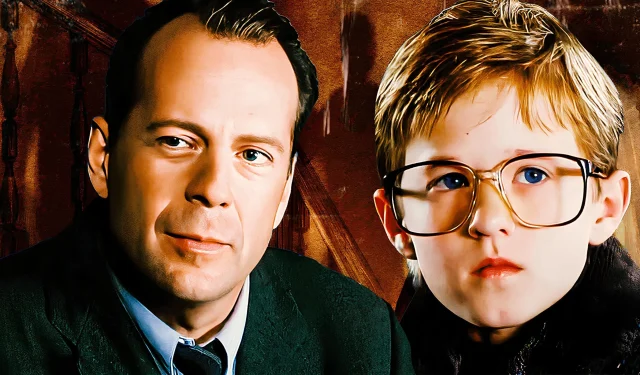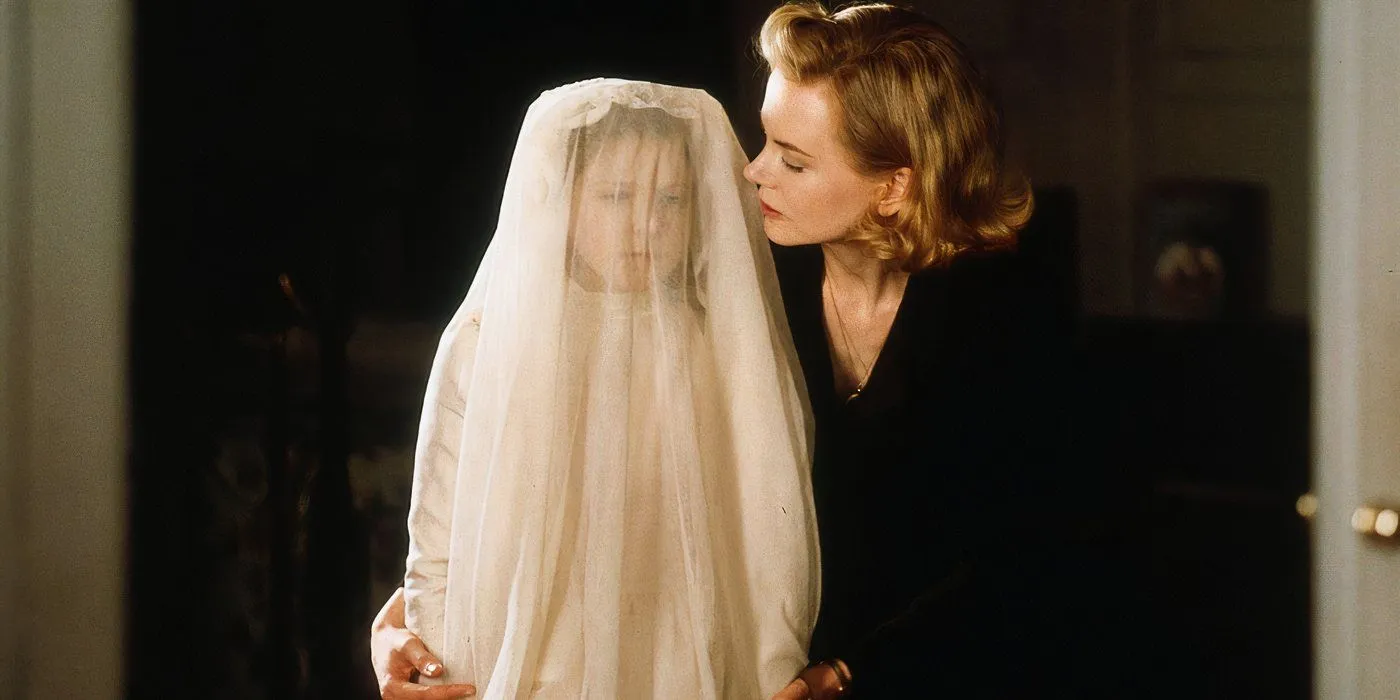
Warning: This article addresses sensitive topics, including murder-suicide.
The Impact of Twists in Horror Cinema: A Comparative Analysis
Among film enthusiasts, The Sixth Sense‘s iconic twist remains a benchmark in cinematic storytelling. Released in 1999, the film follows a young boy, Cole, who reveals to his therapist that he can see and communicate with the deceased. This captivating twist solidified M. Night Shyamalan’s reputation as a master of surprise endings. Just two years later, The Others emerged, delivering a similarly shocking revelation that left audiences equally astounded.
Unraveling The Others: A Haunting Tale
Often regarded as one of Nicole Kidman’s most compelling performances, The Others tells the story of Grace Stewart, a mother living in a dimly lit, isolated mansion with her light-sensitive children. As the narrative unfolds, three mysterious domestic staff arrive, leading to a series of eerie occurrences that challenge Grace’s perception of reality. The oppressive darkness within the house becomes a refuge, while the sun symbolizes danger, setting up an intriguing conflict.
Revelation: The Parallel Twists

In a climactic twist, Grace and her children encounter what they perceive as intruders, who are, in fact, living individuals conducting a séance. By the film’s conclusion, it’s revealed that Grace and her children are, tragically, deceased; Grace’s actions lead to their demise, culminating in her own death. This alignment with The Sixth Sense, where Bruce Willis’s character unravels his own death, underscores a haunting thematic echo between the two films.
View Trailer
Subtle Hints of Mortality
While both films share a thematic twist, the execution differs significantly. The Sixth Sense presents a straightforward narrative in which the therapist aids the boy in understanding his gift, while The Others integrates a more complex array of ghost story conventions that obscure the truth. Although viewers may suspect the family’s tragic fate, it’s Grace who appears least likely to have committed such an act.
Semiotic clues throughout The Others subtly suggest the protagonists’ spectral status, though they are easily missed amidst the film’s haunting imagery. For instance, Grace’s limitation in leaving her estate parallels the hints in The Sixth Sense about the therapist’s unacknowledged death. Such intricacies, including Grace’s migraines and the children’s peculiar dialogues about breathing, reinforce the film’s chilling undercurrents.
The Disturbing Premise: A Deeper Look
At its core, The Others is a quintessential gothic horror narrative, characterized by classic haunted house motifs. Grace, overwhelmed by fear and the desire to protect her children, transforms into something altogether more sinister as the film reveals her tragic backstory—a family annihilator grappling with her psychological trauma. Nicole Kidman found the premise disturbing enough that she briefly stepped away from the project due to nightmares, illustrating just how unsettling this narrative is.
Comparative Reception: The Sixth Sense vs. The Others
|
Comparative Overview |
|||
|---|---|---|---|
|
Title |
Year |
Director |
Rotten Tomatoes Critics Rating |
|
The Sixth Sense |
1999 |
M. Night Shyamalan |
86% |
|
The Others |
2001 |
Alejandro Amenábar |
84% |
Conclusions on Character Arc and Thematic Resolution
By the film’s end, Grace continues to portray vulnerability and unpredictability, scarcely reconciling with her new reality. This conclusion markedly contrasts with the resolution in The Sixth Sense, where the therapist finds serenity and departs in a brilliant light. In The Others, Grace’s denial of the presence of the living reinforces the unsettling atmosphere, suggesting a potential for her character to evolve into a vengeful spirit, effectively laying the groundwork for a more disturbing sequel.
For further insights into the shared themes and cinematic techniques in these compelling narratives, click on the source.




Leave a Reply